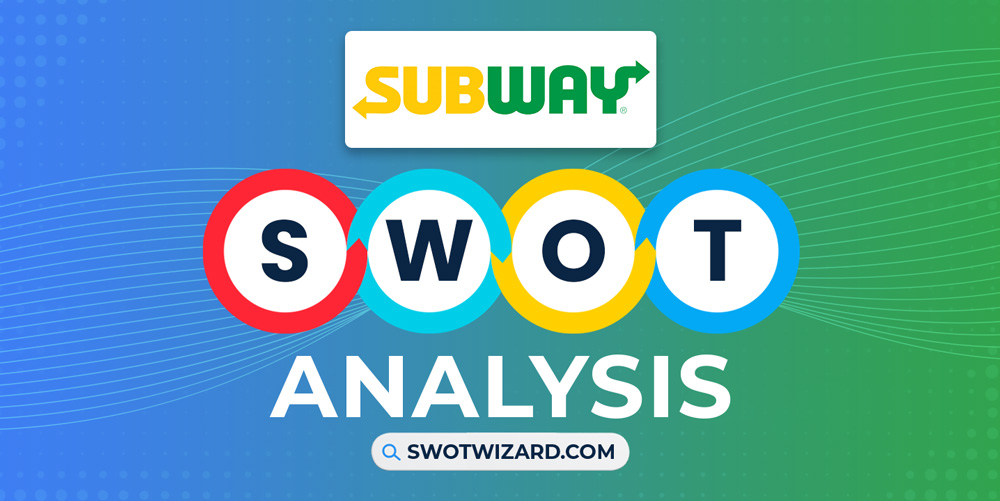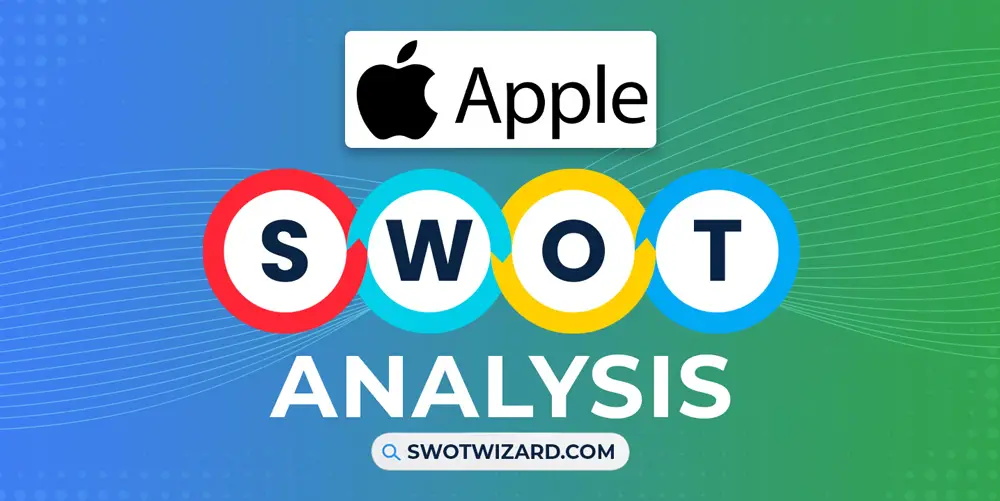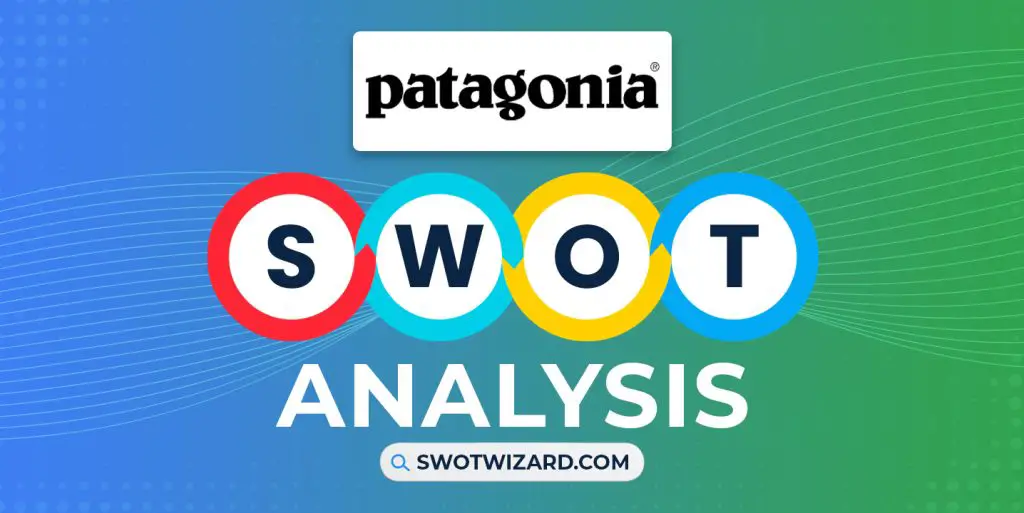Subway is on every corner in major cities worldwide and has become one of the well-known go-to places for millions of people. With a huge presence, the company holds the world’s largest restaurant chain title. We will get to learn more about these in the Subway SWOT analysis.
Subway: Company Overview
| Company | Subway |
| Industry | Restaurants |
| Founded | 28 August, 1965 |
| Founder | Fred DeLuca, Peter Buck, Carmela DeLuca |
| President & CEO | John Chidsey |
| Headquarter | Milford, Connecticut, U.S. |
| No. of Employees | 410,000+ |
| Annual Revenue | $16.1 billion (FY 2019) |
| Website | subway.com |
In the chaotic year of 1965 in the USA, one of the wholesome and one of the biggest fast-food restaurant chains, Subway, started its journey, founded in 1965 by Fred DeLuca and Peter Buck. And almost 60 years later, It operates over 37,000 stores in over 100 countries and generates an annual revenue of $$16.1B, with 410,000 employees.
Product & Services of Subway
Submarine sandwiches | Cookies | Pizzas | Salads
Subway Competitors
McDonald’s | KFC | Starbucks | Domino’s Pizza | Burger King | Chick-fil-A | Dunkin Donuts | Taco Bell | Wendy’s | Chipotle | Tim Hortons
Did You Know?
The original foot-long sandwich introduced by Subway in the 1960s was only 11 inches long.
Strengths – Subway SWOT Analysis
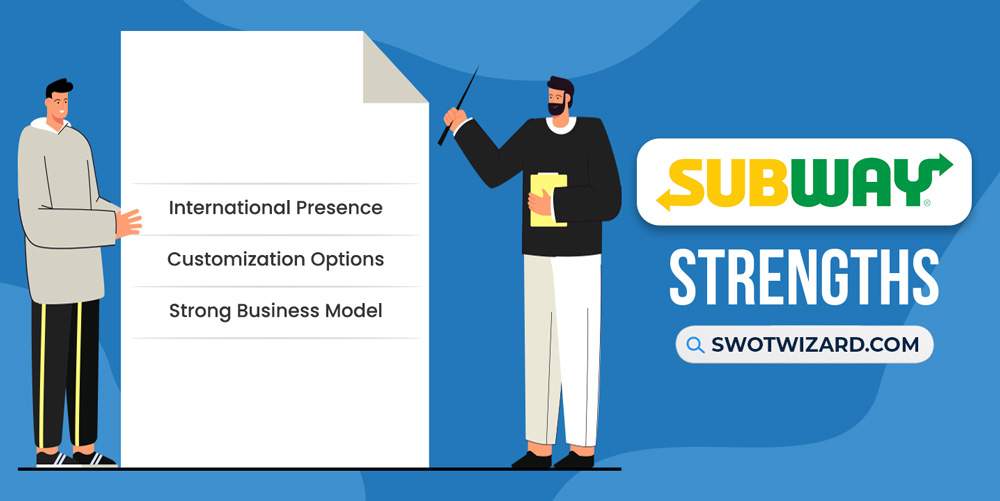
International Presence: With 37,000 restaurants in over 100 countries, Subway has a global reach which works as a significant strength. In many countries, other competitors could reach or tap the potential market. Still, Subway successfully expanded into emerging markets, leveraging its brand recognition and adapting menus to local tastes.
Customization Options: People prefer that option for customization, and the company’s “build-your-own” sandwich concept is a powerful competitive advantage. Customers can personalize their orders by choosing bread, fillings, and toppings, creating a unique experience. As a result, it enhances customer satisfaction and encourages repeat visits.
Strong Business Model: After McDonald’s, companies learned to effectively and efficiently implement a franchise business model. In the case of Subway, franchising allowed rapid expansion and reduced capital requirements for Subway while providing entrepreneurial opportunities for individuals. As a result, the company has thousands of franchises worldwide, and more sandwich shops in the USA.
Weaknesses – Subway SWOT Analysis
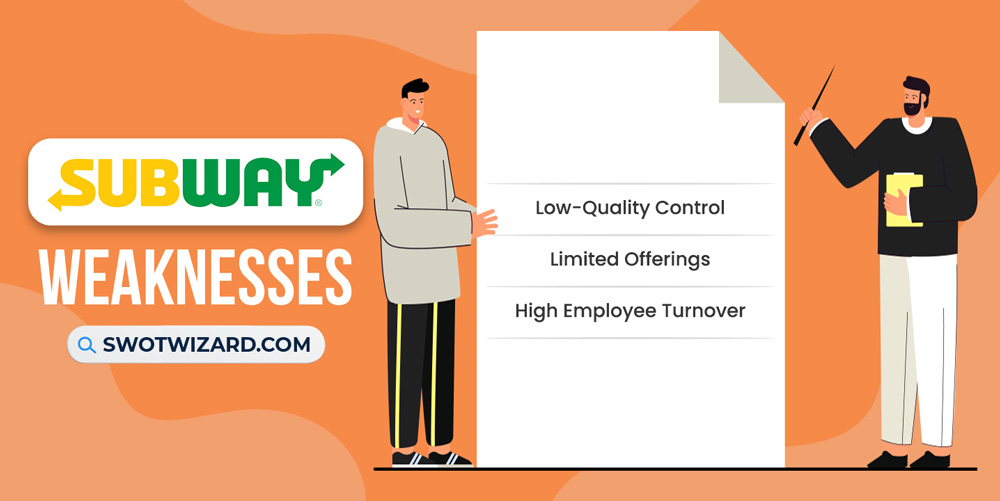
Low-Quality Control: As we know, there are thousands of franchises of the company, and It’s difficult to maintain quality all over the place. Because of that, Subway has faced criticism regarding its low-quality control, which can negatively impact customer satisfaction and brand reputation. A few years back, in many Canadian stores, only 50% of meat was found in Subway chicken, raising concerns about the quality of their products.
Limited Offerings: The brand has its customization offerings, but that is limited, and because of that, Subway’s menu has been criticized for its limited variety compared to competitors. The lack of diversification may lead to customer fatigue and decreased appeal, especially among individuals seeking alternative options, restricting its ability to cater to evolving consumer preferences.
High Employee Turnover: No company wants to let go of employees for whom they invested the training and everything, which is bad for business. Regarding Subway, the company has been struggling with high employee turnover rates. As per the data, even though the turnover rate has been reduced, it is still at 32%, which is still a huge issue.
Opportunities – Subway SWOT Analysis
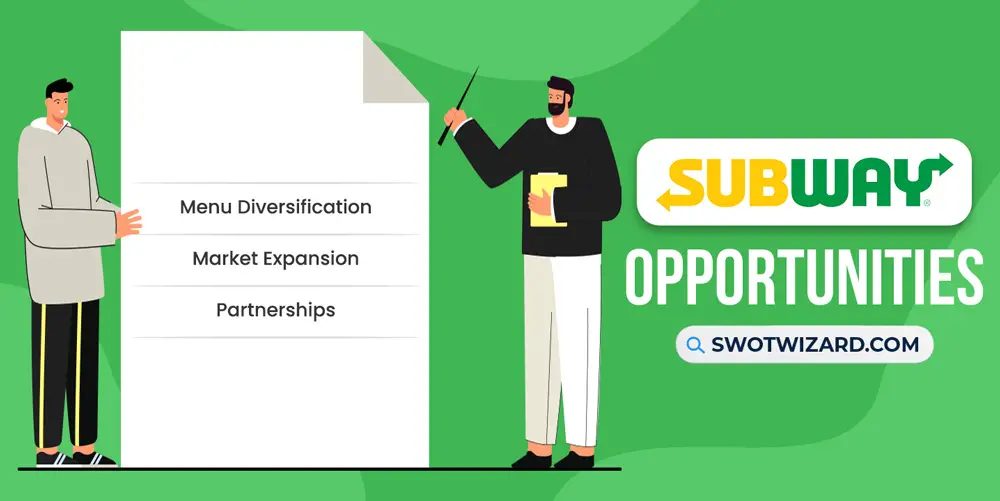
Menu Diversification: There is always room for improvement, and offering something new to the customers, one of which is introducing plant-based protein options, can attract health-conscious consumers. Besides, Subway can cater to a wider range of dietary preferences as markets for these are on the rise.
Market Expansion: Even though Subway has a presence in over a hundred countries, they are not in every country with opportunities for them. After covid, the food industry is booming, and emerging economies with a growing middle class and urbanization offer the potential for expansion and increased market share.
Partnerships: Partnering with renowned food brands or organizations can generate excitement and bring added value to the Subway experience. Besides, the global online food delivery market is projected to reach $254.52B by 2023, highlighting the potential for Subway to leverage partnerships with delivery platforms and collaborating with food delivery platforms like Uber Eats or DoorDash can extend Subway’s reach.
Threats – Subway SWOT Analysis
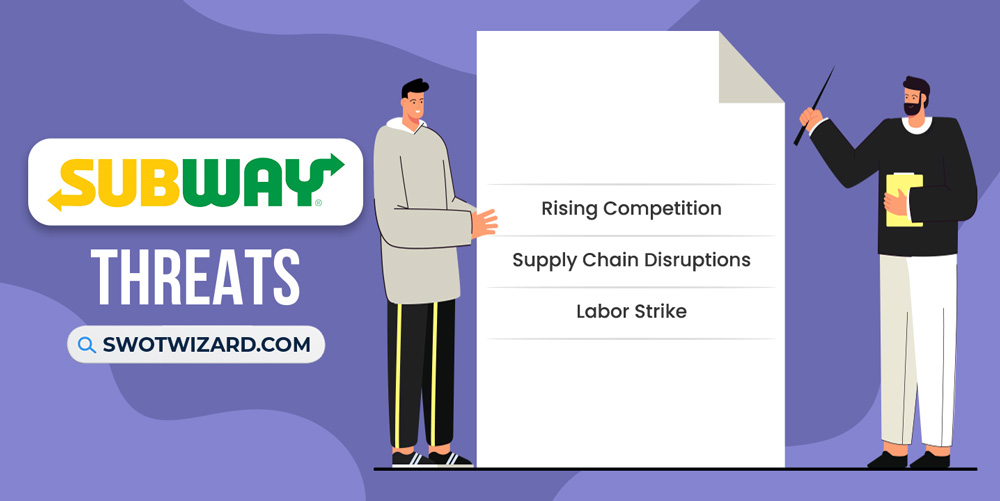
Rising Competition: Even though the profit margin is relatively small, the competition isn’t. Fast-food giants like McDonald’s and Burger King have expanded their sandwich offerings, directly challenging Subway’s market share. Not to mention the rise of popular fast-casual chains like Jimmy John’s and Potbelly has attracted customers seeking higher-quality sandwich options at a similar price point.
Supply Chain Disruptions: It’s rare not facing supply chain issues in the food industry. Almost a few years back, a severe drought in California resulted in skyrocketing avocado prices, which impacted Subway’s ability to offer affordable guacamole as a popular topping. Not just that, meat shortage has become an ongoing issue for these companies, and Subway is one of the primary causes of the supply chain disruptions, leading to rising costs.
Labor Strike: As the labor market becomes more competitive, with the high turnover rate, labor-related issues have become a norm in the food industry. Instances of low wages and poor working conditions have prompted worker activism in the fast-food industry. And unionized workers are striking worldwide for things to change, affecting not just Subway, but also the entire food industry.
[Bonus Infographic] SWOT Analysis of Subway
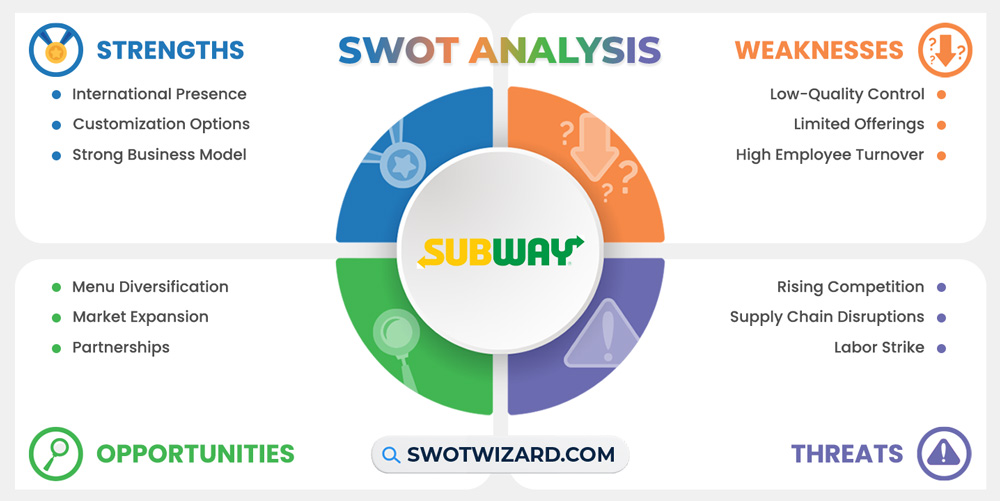
Recommendations for Subway
Even giant restaurant chains are going out of business, and staying ahead is difficult in the competitive food market.
- Subway should focus on diversifying its menu to combat rising competition and cater to evolving customer preferences.
- By identifying locations with high foot traffic, such as airports, college campuses, or urban centers, Subway can attract a larger customer base.
- Strategic partnerships with complementary brands can help the company expand its reach and enhance its brand image.
- They should proactively address labor issues to maintain a motivated and satisfied workforce.
Frequently Asked Questions (FAQs)
Which country brand is Subway?
Subway is a USA country brand.
Is Subway halal in India?
Yes, Subway is halal in India.
Final Words on Subway SWOT Analysis
Subway faces rising competition, potential supply chain disruptions, and labor issues. However, the company can navigate these threats by diversifying its menu, expanding into new markets, forming strategic partnerships, addressing labor concerns, and thriving in the fast-food industry.
References
- Wikipedia contributors. (n.d.). Subway. Wikipedia.
- Russ, H. (2023, May 1). Subway shed more U.S. sandwich shops in 2022. Reuters.
- Hafner, J. (2017, March 1). Subway chicken only about 50% meat, according to Canadian study. USA TODAY.
- Castrodale, J. (2022, May 10). Subway restaurants are running short on meat. Food & Wine.

